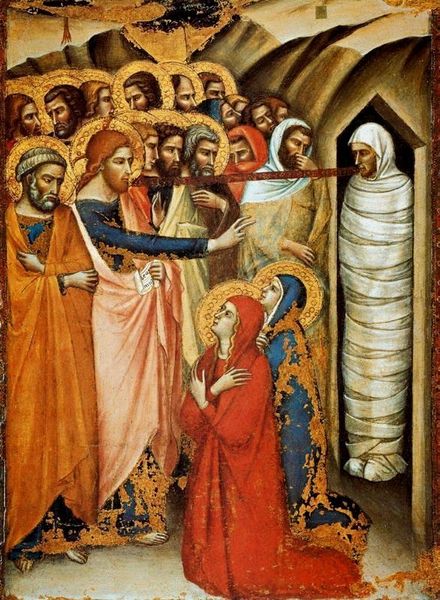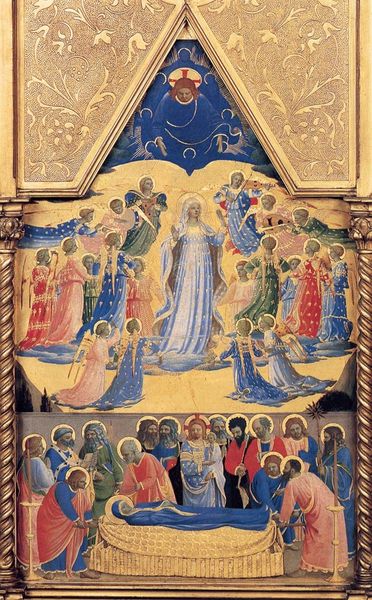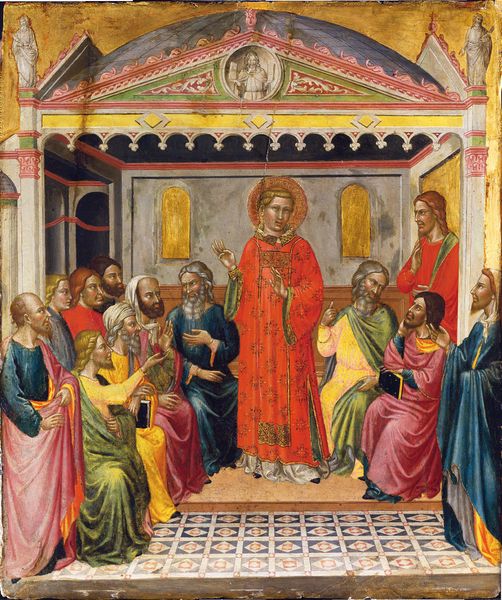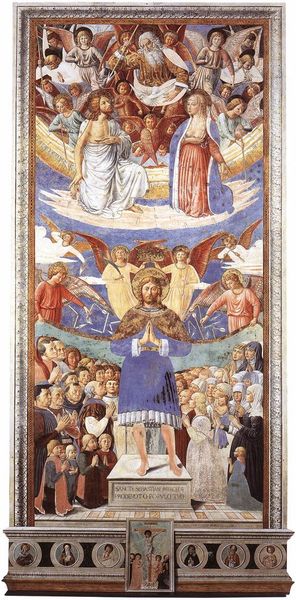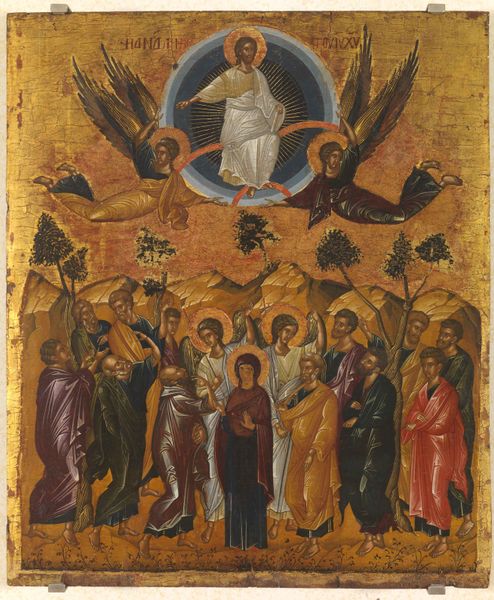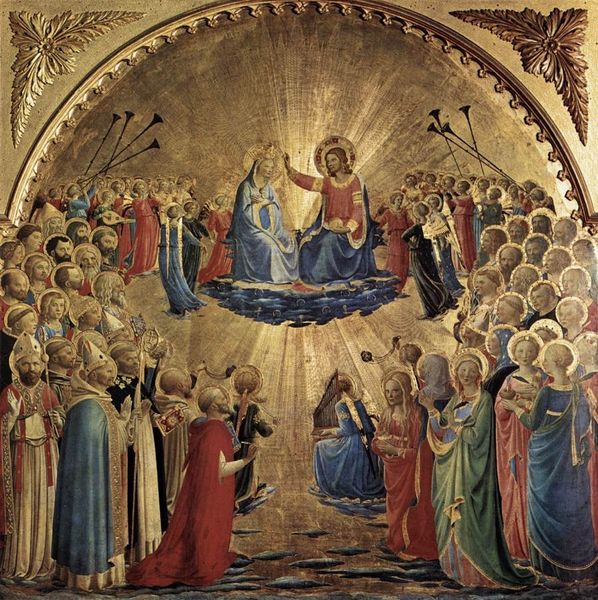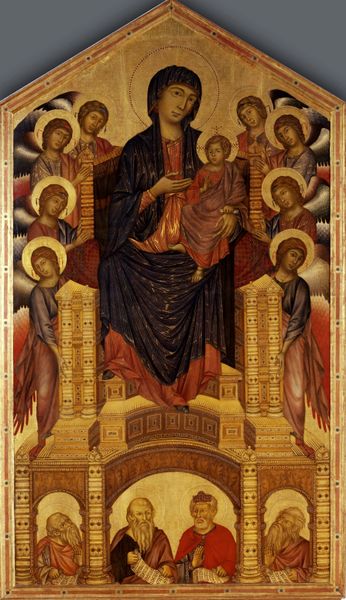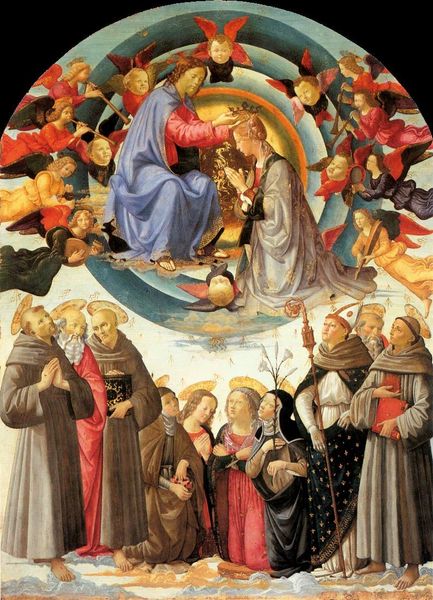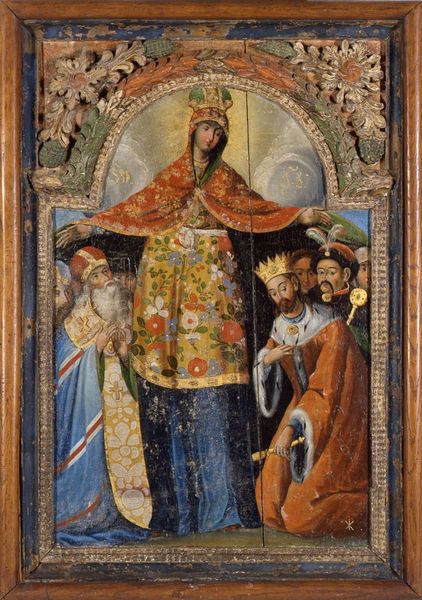
tempera, painting
#
narrative-art
#
tempera
#
painting
#
figuration
#
history-painting
#
italian-renaissance
#
early-renaissance
Copyright: Public domain
Editor: Here we have Jean Fouquet's "The Dormition of the Virgin," created around 1460 using tempera. It depicts the Virgin Mary on her deathbed, but what really strikes me is how literally material that event is rendered—all the gathered figures seem so intensely preoccupied. What do you see here? Curator: This piece provides an interesting lens through which to consider the production of religious imagery in the 15th century. The materials—the gold leaf, the tempera itself, the wood panel—would have held significant economic value, reflecting the patron's wealth and status and the labor necessary to create this at a high level of artistic output. Consider the sheer manpower in procuring the materials and executing the painting to fulfill the patron's or commissioning body's aims. Editor: That’s fascinating. I hadn't considered the literal economic investment so clearly tied to the display of religious devotion. Is there a kind of commentary implicit in such expenditure? Curator: It depends on how you view the relationship between materials, labor, and spirituality. Was this extravagant output designed to foster sincere belief or impress upon the viewers the glory of God or to reflect the donor's munificence? Who was the intended audience, and what was expected of them upon beholding such splendor? Consider how Fouquet uses line and colour and form as well and the gold trim to enhance not just the religious message but also how that medium amplifies power, visually and texturally. What does the materiality offer or obstruct? Editor: It recontextualizes it, perhaps. It’s no longer solely a matter of faith, but one of craft and tangible resources carefully arranged. The earthly, physical components used to convey such elevated ideals… it makes me consider their connection much more deeply now. Curator: Exactly. Seeing the sacred rendered through such meticulous, costly processes highlights the human contribution to constructing these narratives and allows the artist and the patrons to engage. Editor: Thanks, this offers a more worldly appreciation. It reframes the historical focus into an insightful dialogue between materiality and its social context.
Comments
No comments
Be the first to comment and join the conversation on the ultimate creative platform.


